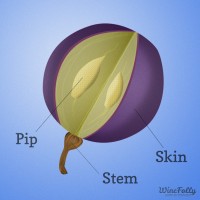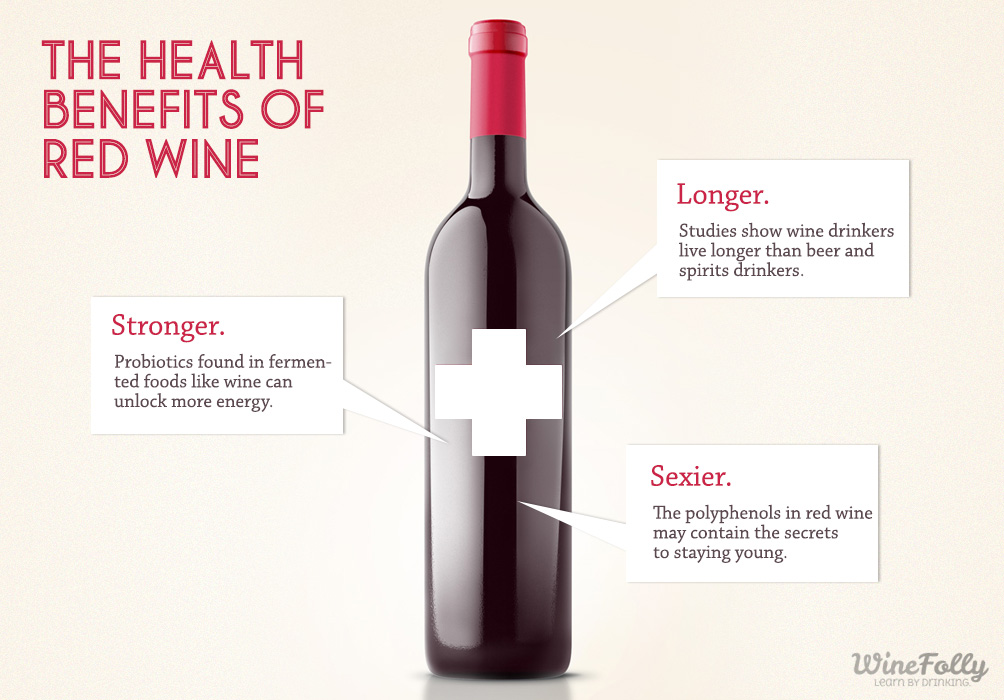While your health-freak friends spend hundreds of dollars on weird miracle fruit juices, you can sit back and relax. As it happens, your red wine habit might just be the key to staying young longer.
The health benefits of red wine are greater than you might think. Besides having antioxidants, fermented foods are good for digestion and alcohol itself has also shown some surprising traits over long-term moderate use. Discover the health benefits of red wine and how much you should consume to live well.
Remember, everyone’s physiology is different. Talk to your doctor before doing anything rash.
The Health Benefits of Red Wine
Red Wine Has More Antioxidants Than Açaí Juice
Red wine is full of polyphenols including proanthocyanidin; a powerful antioxidant. In fact, some red wines have more antioxidants than commercial grape juice, raw blueberries and even miracle fruits like Açaí. In the fruit juice category, a full-bodied red wine will even beat pomegranate juice.
How are antioxidants measured? Antioxidant rich foods have traditionally been measured using the ORAC method which stands for Oxygen Radical Absorbance Capacity(1). Every food has a varying ability to absorb free radicals in a controlled environment. ORAC scores range from 50 for a carrot to 5,200 for a teaspoon of cinnamon.
Red Wine vs. Antioxidant Rich Foods
- Semi-Sweet Chocolate Chips – 9,000 (1/4 cup)
- Full-Bodied Red Wine 7,700 (6 oz glass)
- Blueberries – 6,500 (1 cup)
- Pomengranate Juice – 5,500 (6 oz glass)
- Cinnamon – 5,200 (teaspoon)
- Açaí Juice – 3,030 (6 oz glass)
- Cooked Tomatoes – 1,350 (1 cup)
Why Antioxidants?
Free radicals cause destruction of our body’s cells and antioxidants stop them. Recent studies have shown antioxidants reduce the risk of some diseases, such as heart disease and cancer.
Upcycled winery waste has even been used for skincare
What Wines Have The Most Antioxidants?

Wines with high antioxidants are the dark red wines. Since antioxidants come from the pips and skins of a grape, as well as contact with oak, you’ll find that full-bodied red wines aged in oak have the highest antioxidant properties.
If you can’t see through your wine, it has lots of polyphenols. See the list of Full-Bodied Red Wines
How Much Wine is Too Much?
The goodness of red wine can be easily countered with the negative effects of alcohol. So how much wine is too much? According to the Dietary Guidelines for Americans:
“Alcohol should be consumed in moderation. It is not recommended that anyone begin drinking alcohol or drink more frequently on the basis of potential health benefits.”
Dietary Guidelines for Americans (2010)
Moderate Drinking Definition
- 2 glasses of wine for men daily
- 1 glass of wine for women daily
The major issues the DGA points out is that pure alcohol is very high in calories (almost as high as fat). High calorie foods are one of the major problems with American’s diets. If you’re drinking wine, it’s important to acknowledge that wine is not calorie free.
Health Benefits of Fermented Foods
Fermented foods have long been associated with good digestion. The probiotics and microbes found in fermented foods contain lactic-acid that nourish the good bacteria in your GI tract. Some red wines contain more lactic acid after going through a secondary fermentation that makes the wine taste smoother. Here are some common fermented foods:
- Yogurt & Some Cheeses
- Real Sauerkraut
- Kimchi
- Sourdough Bread
- Tempeh & Soy Sauce
- Beer, Cider, Wine & Sake
Benefits of Moderate Drinking
Over the years, several long-term studies have been conducted comparing drinkers to non-drinkers. There have also been studies comparing wine drinkers to spirits/beer drinkers. Here are some of the more interesting findings:
- Wine drinkers have a 34% lower mortality rate than spirits/beer drinkers. (2)
- Moderate drinkers have 30% less risk than non-drinkers of developing type 2 diabetes. (3)
- Brain function declines less quickly in moderate drinkers than non-drinkers. (4)
Sources
1. Since ORAC scores have not been tested on animals, the USDA has removed the usage of ORAC as a health indicator. Currently all testing for ORAC has been in vitro
2. A 29 year study of 2,468 men published in Journals of Gerontology, 2007.
3. A 12 year study of 369,862 people by Amsterdam’s VU University Medical Center, 2005.
4. A study of 1,416 people by Columbia University, published in Neuroepidemiology, 2006.
ORAC (oxygen radical absorbance capacity) definition on wikipedia.org
Levels of Proanthocyanidin in foods USDA
Dietary Guidelines for Americans (2010) health.gov (next release: 2015)
Natural News about The Benefits of Fermented Foods

